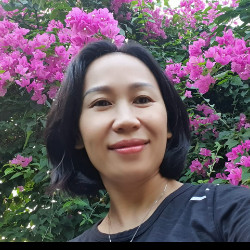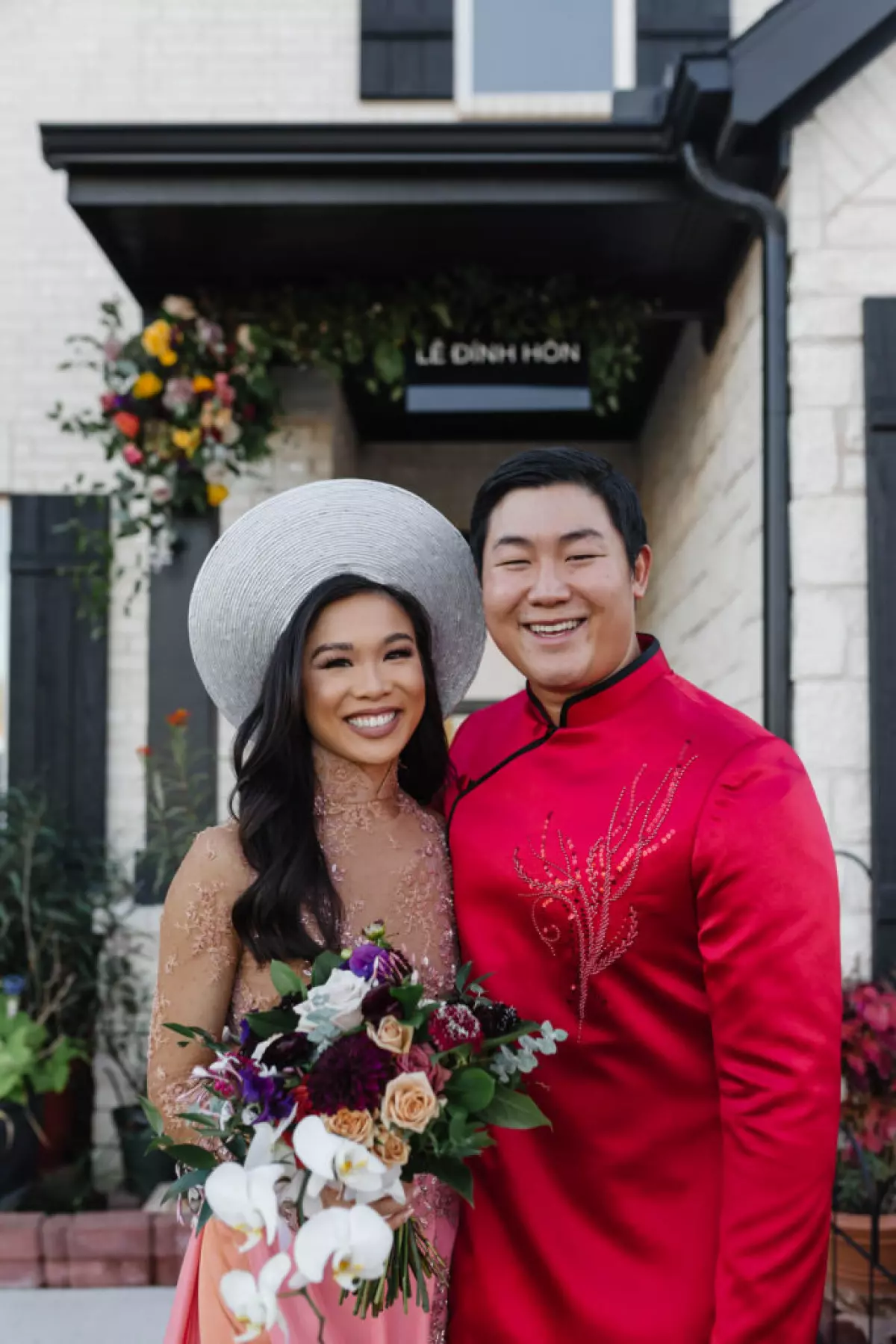
We can officially call each other’s parents Mom and Dad now! Our Vietnamese Engagement Party, known as Đám Hỏi, was a beautiful celebration surrounded by our loved ones. As we embark on our journey towards marriage, we wanted to honor the important traditions in Vietnamese culture and share them with our future generations. In this article, I will provide you with insights into the Đám Hỏi tradition and offer some tips on how to personalize it while respecting its essence.
The History of Vietnamese Courtship
It's fascinating to explore the roots of Vietnamese courtship. In the past, parents played a significant role in arranging marriages for their children. However, as times changed, so did the courtship process. Today, there are three stages in Vietnamese courtship, each marked by a ceremony or party.
Dam Ngo
Traditionally, the Dam Ngo is the initial meeting between the parents of the prospective couple. It is during this meeting that the boy's family brings gifts and seeks permission for their son to start dating the girl. However, modernization has led to modifications in this tradition, with couples meeting first, followed by an introduction to the parents. For my own Dam Ngo, we kept it intimate, involving only our immediate families.
Đám Hỏi
The Đám Hỏi tradition represents the Vietnamese Engagement Party, where the groom's family visits the bride's family and presents gifts. This ceremony is steeped in tradition, with incense burning and blessings from ancestors, culminating in the announcement of the wedding date by the bride's family.
Le Ruoc Dau
The final stage of Vietnamese courtship is the Le Ruoc Dau, which takes place on the morning of the wedding. It is when the groom comes to fetch his bride, a moment filled with joy and anticipation.
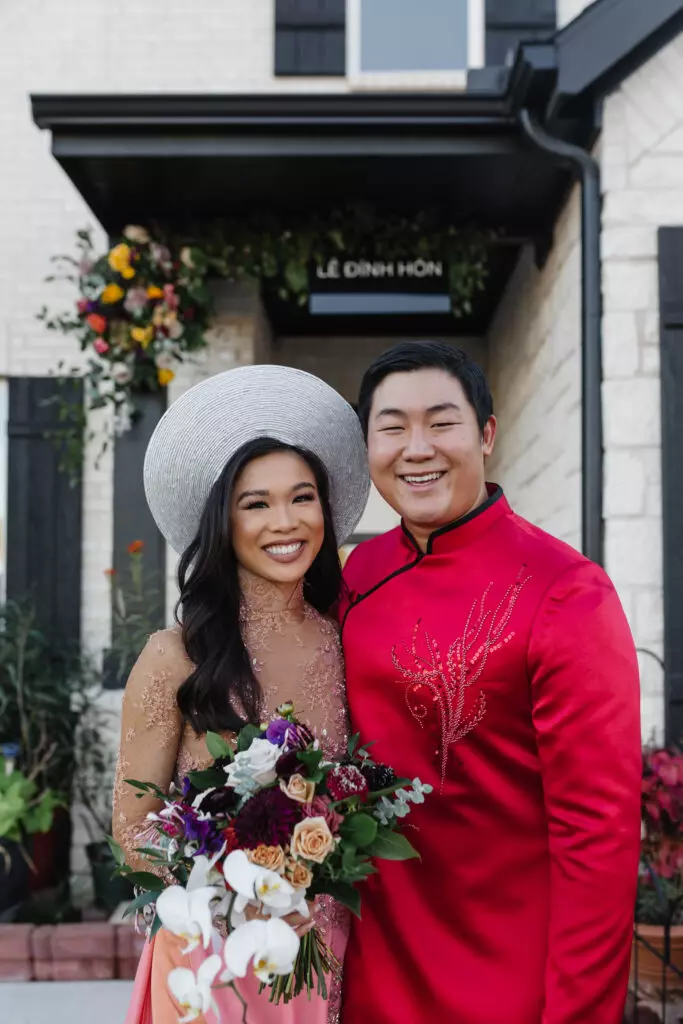
The Preparation
Preparing for the Đám Hỏi tradition involves careful planning and coordination. The parents usually decide on the date, considering auspicious timings and their availability. It's essential to involve your close friends and family members in this process, as they will be an integral part of the celebration.
During the preparation phase, several aspects must be taken into account:
-
Mam Qua: These are gift trays exchanged between the families. The number of trays and the items inside them can be customized, but some traditional elements include fruit, betel leaves, and wine/champagne/cognac. We also incorporated Taiwanese Engagement Cake into our Mam Qua, honoring Johnny's Taiwanese heritage.
-
Decorations: The host family, in this case, the bride's family, is responsible for preparing the venue and creating a welcoming ambiance. This includes cleaning and decorating the bride's parents' home, setting up the altar with Buddhist statues and ancestral photos, and choosing the Ao Dai outfits for the bride, bridesmaids, and the mother of the bride.
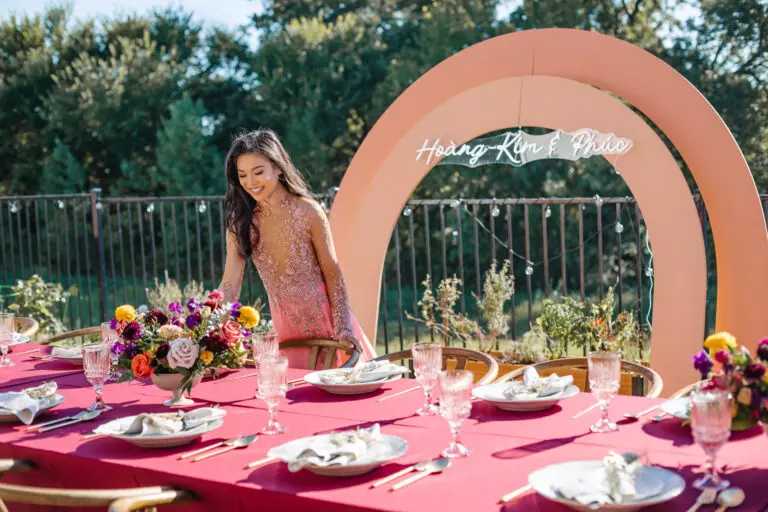
Bride's Family Responsibilities
The bride's family carries out several tasks to ensure the smooth execution of the event:
- Planning the reception menu and beverages, with Vietnamese cuisine being a popular choice.
- Cleaning and tidying up the house, especially the venue where the ceremony will take place.
- Preparing the Altar, which holds great significance in Vietnamese culture. It typically includes photos of ancestors, fruit trays, candlesticks, wedding candles, incense holders, and flowers.
- Choosing the Ao Dai outfits for the bride, bridesmaids, and the mother of the bride.
Groom's Family Responsibilities
The groom's family also has specific duties to fulfill:
- Gathering and preparing the gifts (Mam Qua) to be presented to the bride's family. These gifts are usually placed in gold or red containers and may include traditional items such as xôi (sticky rice) and Bánh Phu Thê (Husband & Wife cake).
- Deciding which groomsmen will carry which Mam Qua.
- Choosing the Ao Dai outfits for the groom and groomsmen.
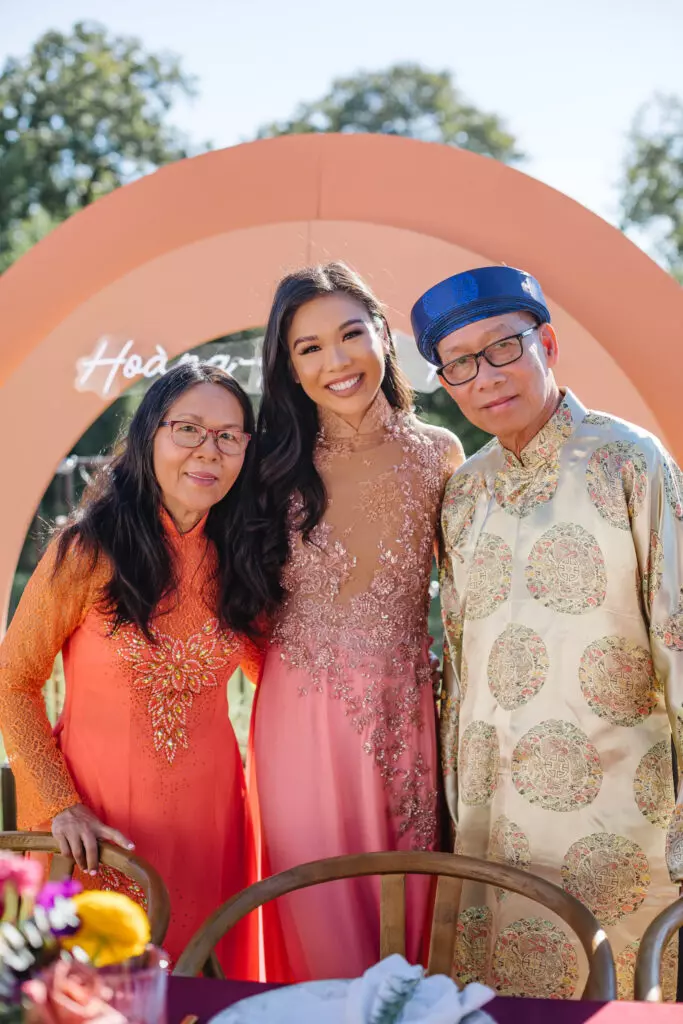
All the Decor
The decor plays a crucial role in setting the ambiance for the Đám Hỏi tradition. There are three essential elements to consider:
-
Le Dính Hôn Sign: This sign, adorned with flowers, is placed outside the bride's family home to indicate that a celebration is taking place. It helps the groom's family identify the right house and informs the neighborhood about the event.
-
Wall of Remembrance: Inside the venue, a designated wall displays the couple's names, the date, and the inscription "Le Dinh Hon." This serves as a lasting memory of the occasion. To add a modern touch, we opted for a custom wall with vinyl letters and a beautiful backdrop painted by friends.
-
The Altar: The most significant decor element, the Altar holds deep cultural and familial significance. It typically includes photos of ancestors, fruit trays, candlesticks, wedding candles, incense holders, and flowers. It's essential to arrange these items according to proper Vietnamese custom and respect the religious beliefs of the family.
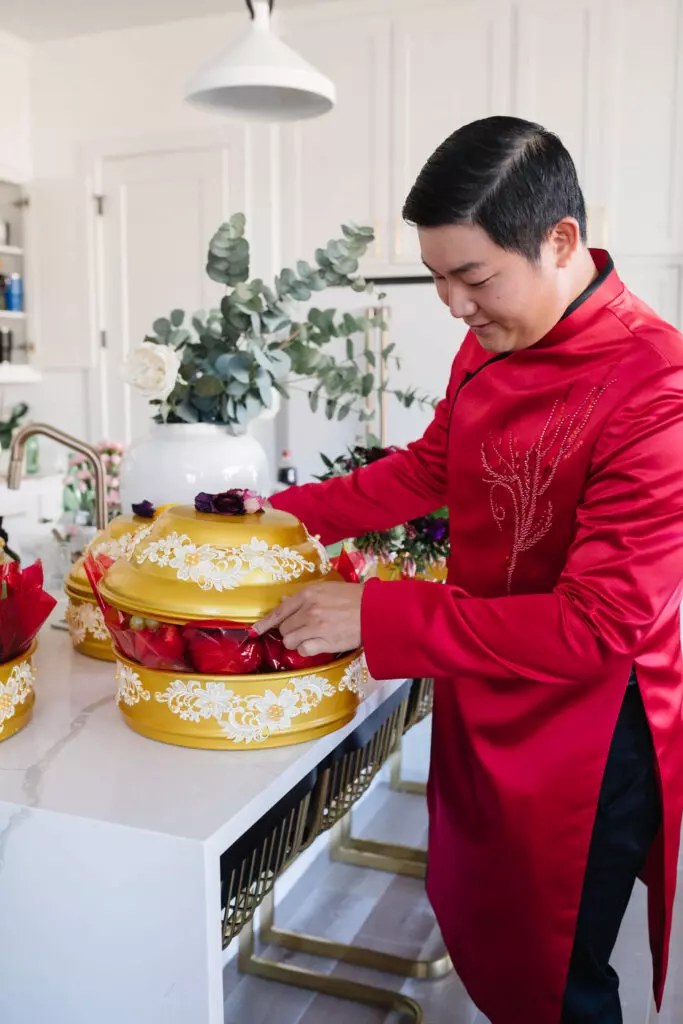
The Reception
The reception is where creativity and personalization come into play. As the bride's family acts as the host, they have the opportunity to plan and decorate the venue according to their preferences. Here are some ideas:
- Choose a color palette that complements the Ao Dai outfits and reflects the desired ambiance. For a fall engagement party, rich colors can create a warm and inviting atmosphere.
- Utilize rental services for elegant table settings, such as Posh Couture, to enhance the visual appeal.
- Incorporate personalized details, such as custom place cards and sprigs of herbs as accents.
- Create a beautiful photo backdrop to capture precious moments during the celebration.
- Pay attention to every detail, from floral arrangements to table settings, to create a cohesive and visually stunning reception.
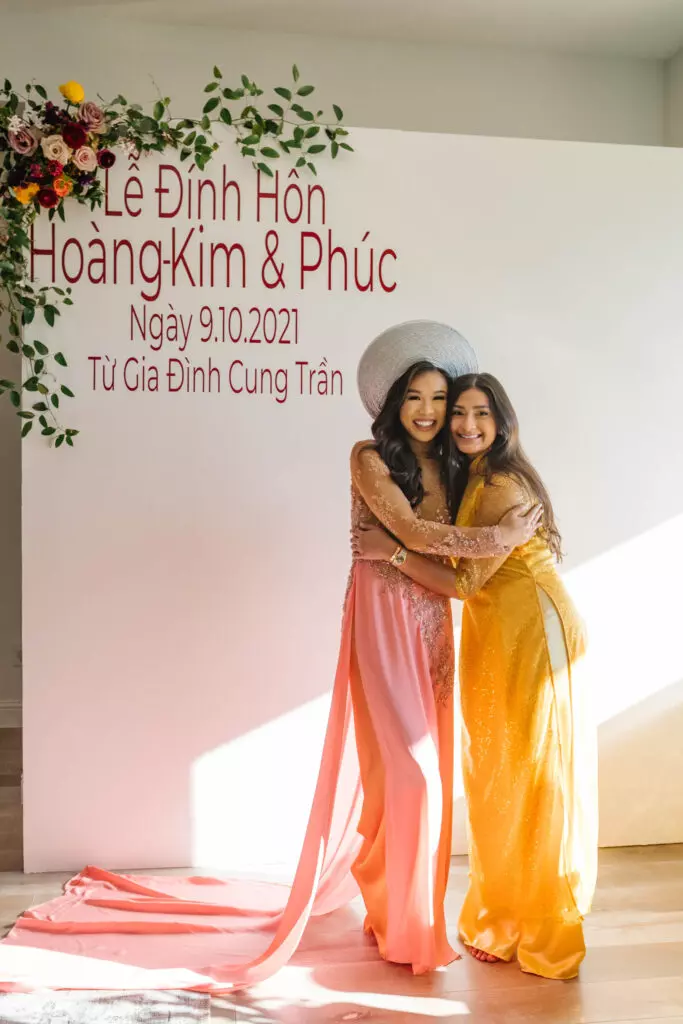
Wardrobe - The Ao Dai
The Ao Dai is an iconic symbol of Vietnamese culture and pride. Its elegance and beauty make it a fitting choice for the bride and groom. Here are some insights into our Ao Dai journey:
- The Ao Dai is a long dress paired with wide-leg pants, representing a harmonious blend of modesty and sensuality.
- Choosing the perfect Ao Dai involves considering the fit, fabric, and intricate details such as beading.
- The bride traditionally wears red, symbolizing luck and happiness. However, for our engagement party, we decided to opt for a different color, as it was not the actual wedding day.
- The groom and the bridal party can also wear Ao Dai, allowing everyone to embrace the cultural elements of the celebration. We opted for a mix of traditional and modern designs to suit our preferences.

The Ceremony
The Đám Hỏi ceremony is a beautiful union of families and an expression of love. Here's a glimpse into the proceedings:
- The groom's family, along with the groomsmen, proceed to the bride's home, where they present the gifts (Mam Qua) to the bride's parents.
- The bride's parents, along with the bridesmaids, receive the gifts and bring them inside for everyone to see.
- The groom's father formally asks for permission to marry the bride, followed by a prayer and blessings from ancestors.
- The couple pours tea for their parents, expressing gratitude for their sacrifices and bowing to show respect.
- The groom's mother presents gifts to the bride's family, marking the acceptance of the bride into the groom's family.
- The groom then presents the bride with her engagement ring, symbolizing their commitment to each other.
- The ceremony concludes with the bride's family announcing the upcoming wedding date, an exciting moment for all.
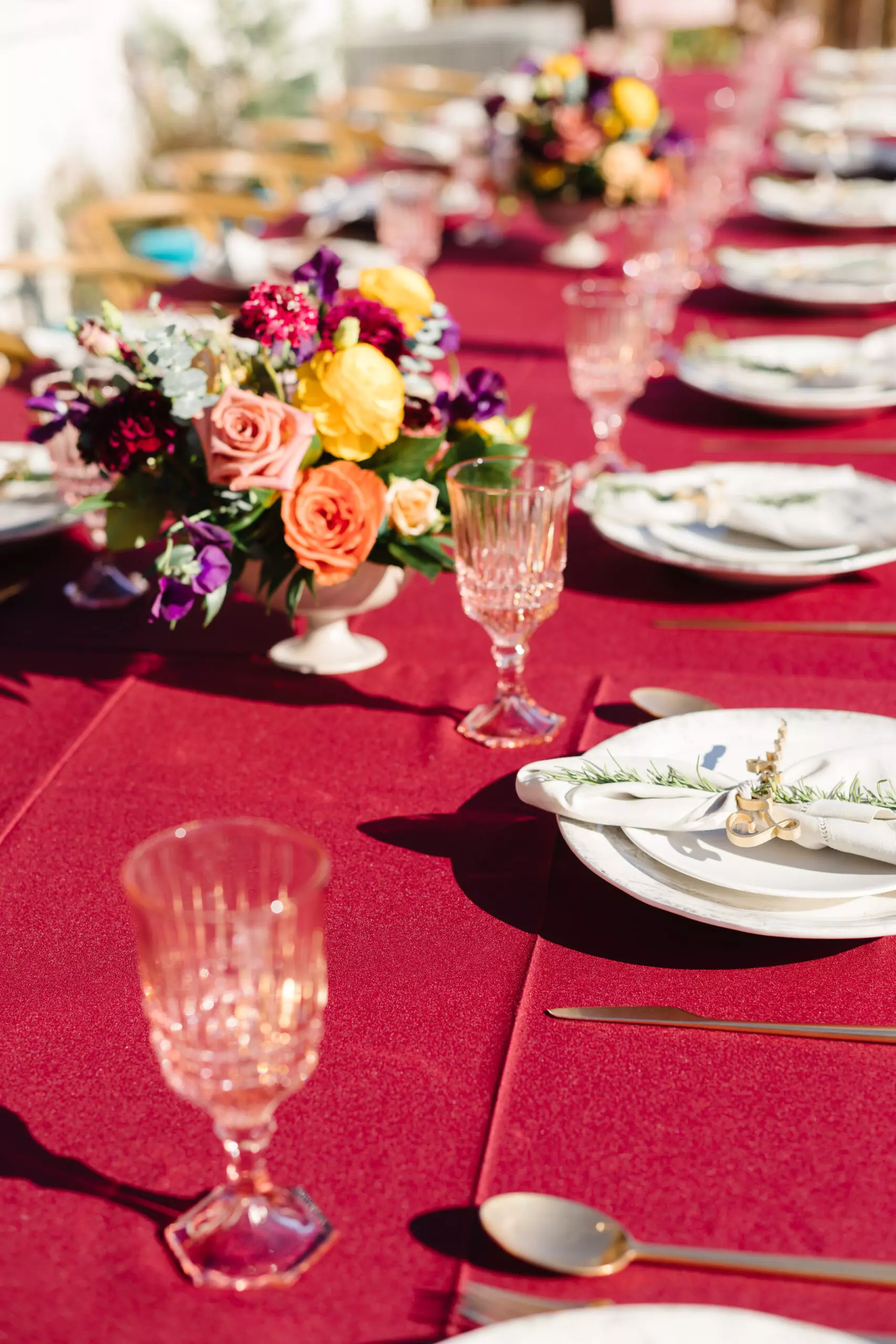
The Đám Hỏi tradition celebrates love, family, and cultural heritage. It's a beautiful way to honor Vietnamese customs while adding personal touches that reflect your own journey. We hope our experience and insights will inspire future couples to embrace and celebrate their own cultural traditions.
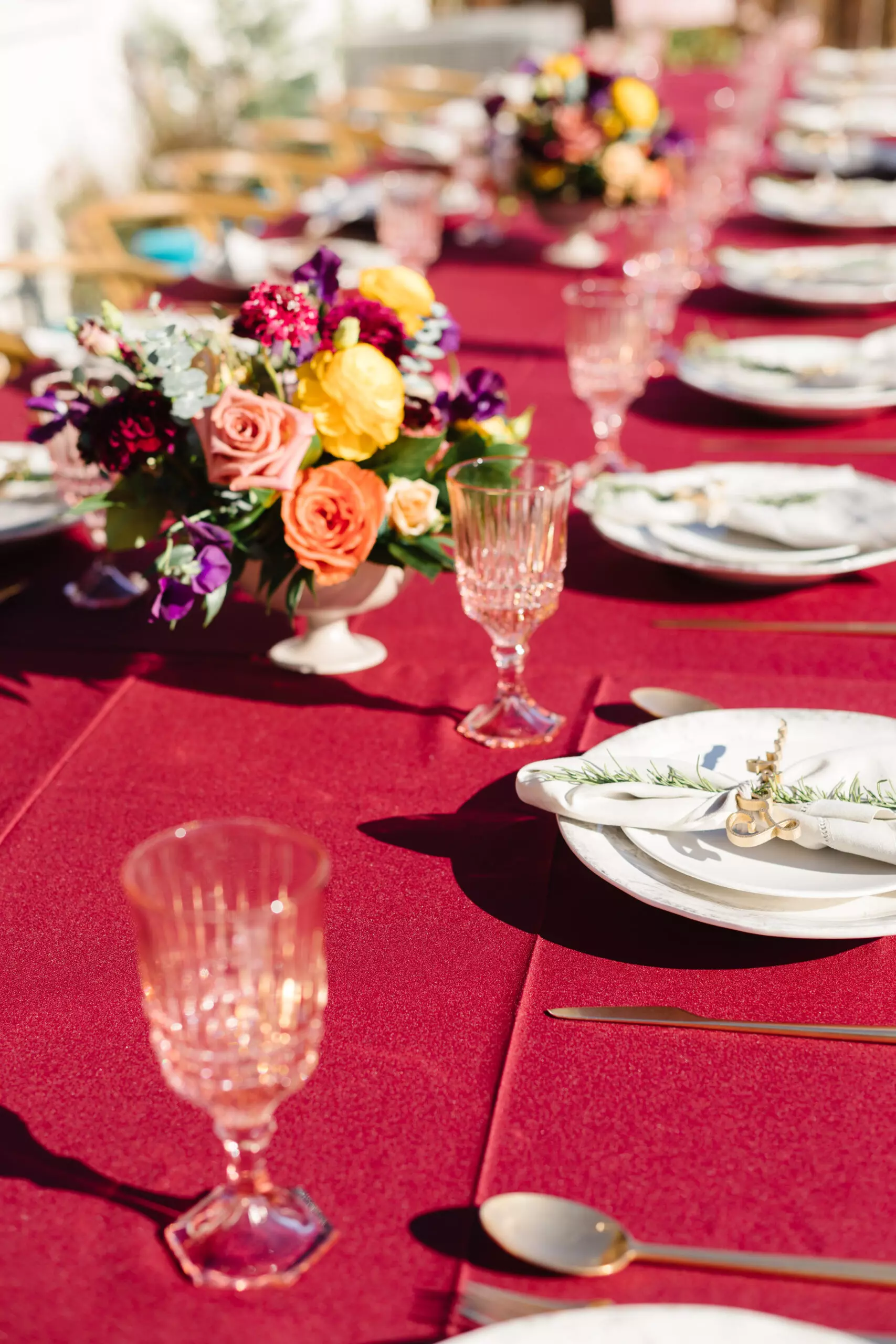
Now, as we prepare for the Le Ruoc Dau and our wedding, we are excited to continue weaving the tapestry of our love story with the rich threads of Vietnamese tradition. Stay tuned for more updates and stories from our wedding journey!
*Note: All images used in this article are taken from the original source - https://starevent.vn/blogs/the-single-girl/the-dam-hoi-tradition-our-vietnamese-engagement-party

